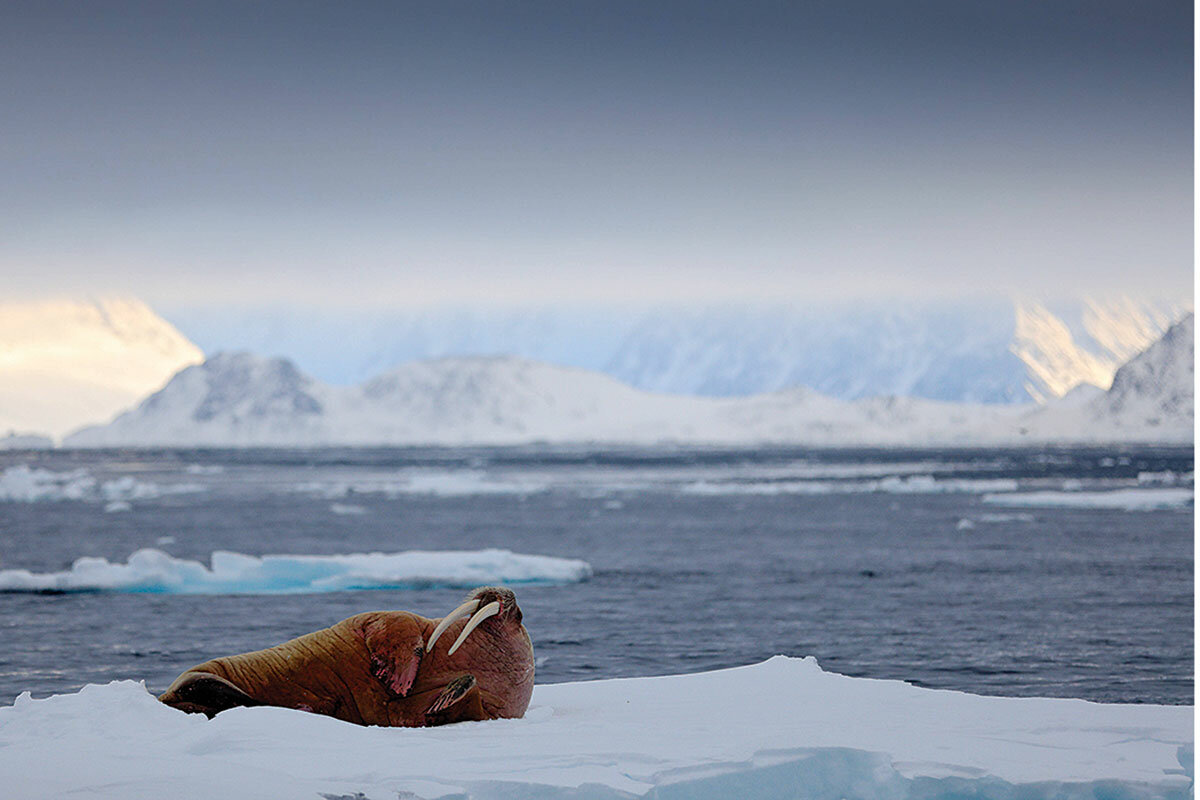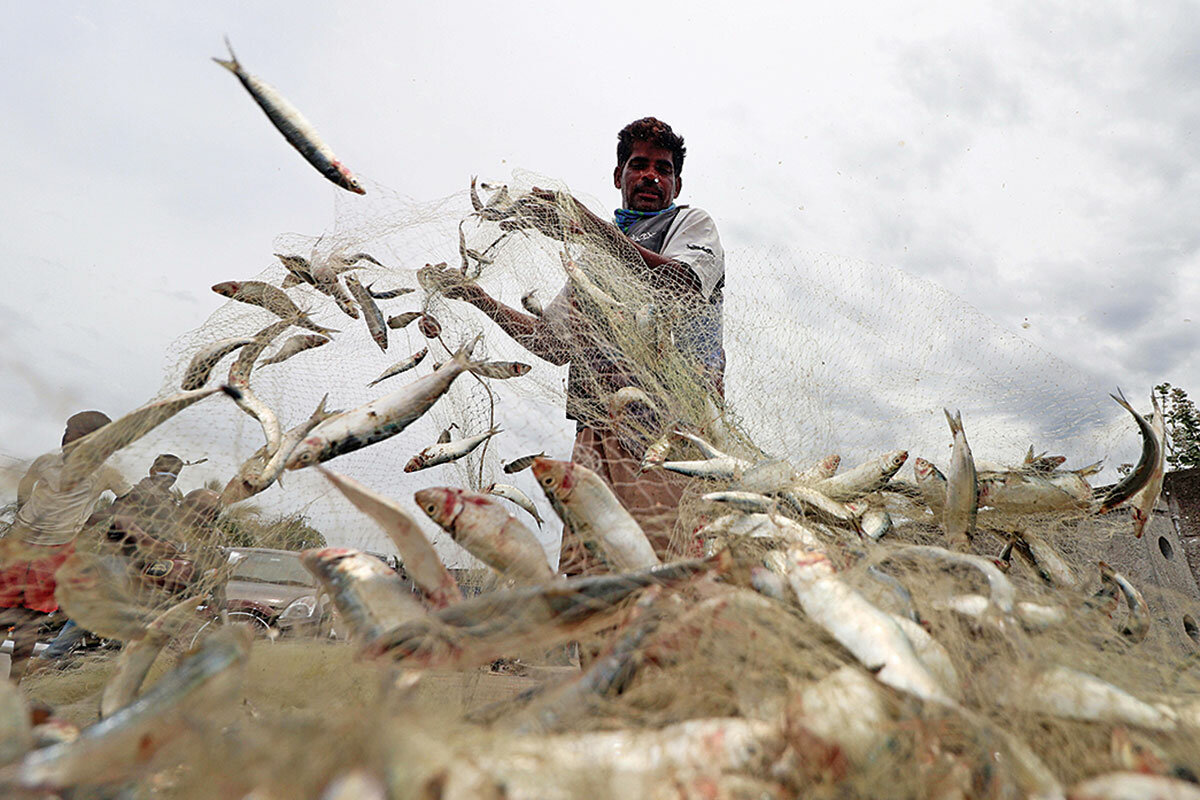Beach and river cleanups: Strange finds, and fish fertilizer for sale
Loading...
Along with cleanup, prevention is another of our themes today. The United Nations has pledged to develop early disaster warning systems for everyone in the world. And in Zimbabwe, women are protecting wildlife and benefiting from jobs in a trained anti-poaching force.
1. United States
More than 355,950 pounds of trash were removed from the Ohio River last year. The debris – which includes everything from messages in bottles to a Civil War-era mortar shell – was collected by the nonprofit Living Lands & Waters, whose small paid crew lives and works aboard its four trash-collecting barges for up to nine months at a time. One barge carries its excavator, which multiplies the effort of volunteers who collected more than a half-million pounds of waste from the Ohio, Mississippi, Tennessee, Rock, Illinois, Des Plaines, and Cuyahoga rivers in 2021. As they move downriver, they organize cleanup and tree-planting events, as well as educational sessions, for volunteers who join them on land, on the barge, or in johnboats.
Why We Wrote This
People sometimes depend on waterways to carry their refuse away, but then the problem doesn’t disappear. In our progress roundup, volunteers are cleaning up river trash by the ton, and others are making something useful out of the waste left on the beach by fishers cleaning their catch.
“No matter who you are, where you’re from, how old, young or what political party you belong to – it doesn’t matter, because no one likes seeing garbage in the river,” said Chad Pregracke, the nonprofit’s founder. “Especially if you know your city or town’s drinking water comes from there.”
The Groundtruth Project
2. Zimbabwe
An all-woman ranger unit is fighting poaching in Zimbabwe. Akashinga – the “brave ones” in the Shona language – has grown into a 200-strong force patrolling eight reserves in Zimbabwe’s rural areas, where women can struggle to make a living.
The group is armed, raising the criticism that a militarized approach fails to fix the root causes of poaching, such as poverty. At the same time, the Akashinga unit says it focuses on reducing poaching through community engagement and teaching about the economic benefits of conservation.
Having an all-woman team “generally de-escalates tension,” said founder Damien Mander. His International Anti-Poaching Foundation said the female rangers have arrested more than 300 poachers without firing a shot, while helping drive an 80% decrease in elephant poaching in the area where they operate. A consultancy’s research that focused on three all-woman ranger units – the Black Mambas of South Africa, Team Lioness in Kenya, and Akashinga – found no instances of corruption among the ranks, suggesting broader inclusion of women in anti-poaching efforts might help tamp down corruption in the sector.
“The opportunity of becoming a ranger came when I needed it the most,” said Margaret Darawanda, a single mother who is now eyeing going to college with the money she’s earned. “I am now able to look after my mother, my child, and my community.”
Thomson Reuters Foundation, International Anti-Poaching foundation
3. Norway
Walruses have returned to Norway in substantial numbers. Atlantic walruses in the archipelago of Svalbard, a major habitat, were nearly driven out of existence after 300 years of commercial hunting. Amid the massive population decline, the Norwegian government instituted a ban on walrus hunting in 1952.
In 2006, there were 2,629 of the long-toothed mammals in Svalbard. By 2018, the last time a population count was conducted, that number had jumped to 5,503, a lesson in the way nature can heal itself if humans give it space. It’s now common to see herds sunning on the banks of the archipelago. With about 230,000 walruses around the world, the species is considered vulnerable by conservationists. The British Antarctic Survey and the World Wildlife Fund are engaging citizen scientists in their Walrus From Space program to help read satellite photos, count the animals, and learn more about how they are being affected by climate change.
Smithsonian Magazine, British Antarctic Survey
4. India
Discarded parts from butchered and cleaned fish are being turned into fertilizer – supplementing incomes and cleaning up beaches. Coastal residents have been stuck with increasing amounts of fish waste dumped at the shore after the fish are prepared for sale. But a training and equipment program from India’s Central Institute of Brackishwater Aquaculture is an example of the circular economy brought to people whose livelihood depends on the sea, says Debasis De at CIBA.
Scientists trained fishers in Chennai to create two products: PlanktonPlus, for supporting healthy plankton in aquaculture projects, and HortiPlus, an organic manure. The products are made with simple machines and a patented enzyme and sold to farmers. “Fish waste is of major concern in a densely populated country like India,” said Dr. De, a team leader for CIBA’s Waste to Wealth program. “It renders the coast unhygienic and uninhabitable for fisher communities.” While CIBA sells the equipment needed to process the fish waste, it also gives some away to those eligible for financial help.
Hakai Magazine
World
The United Nations committed to providing early warning services to every person on Earth within five years. The U.N.’s World Meteorological Organization aims to scale up systems especially for the one-third of the world’s population that lacks coverage, often small island countries that are more prone to climate change-linked disasters. In Africa, 60% of the population lacks coverage that warns about floods, droughts, heat waves, or storms.
Beyond flashing alerts or texts on cellphones, the U.N. is looking for a variety of ways to alert people, especially in areas of low phone ownership – from radio broadcasts to designating people in remote villages to make announcements on megaphones. The World Meteorological Organization expects to present a $1.5 billion action plan at the COP 27 climate change summit in Egypt in November.
“Early warning systems save lives,” said U.N. Secretary-General António Guterres via video message. “Let us ensure they are working for everyone.”
Euronews









